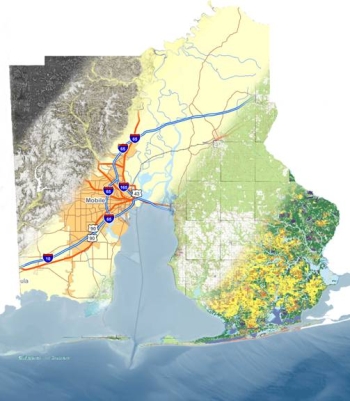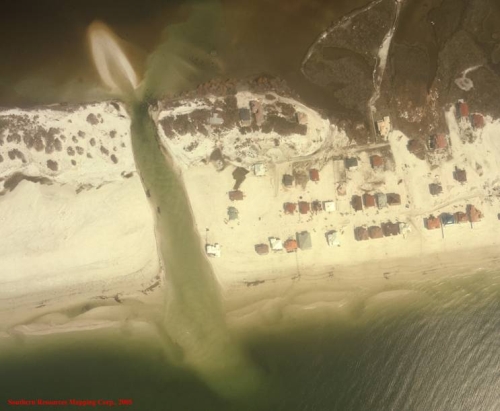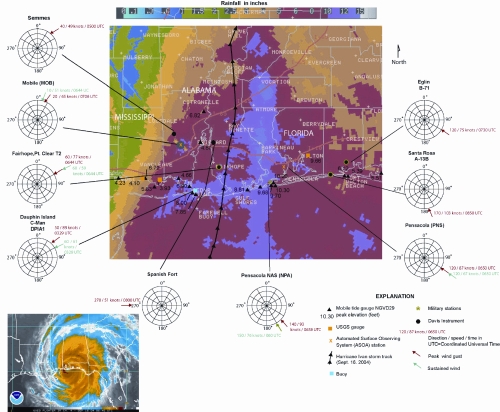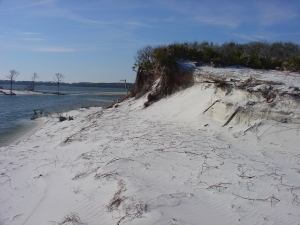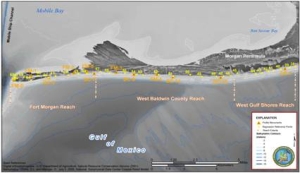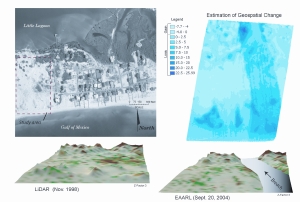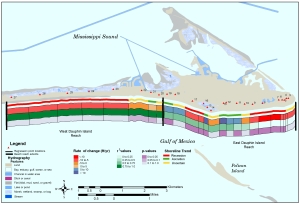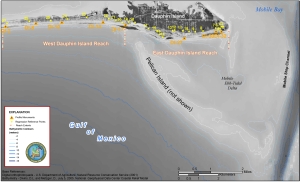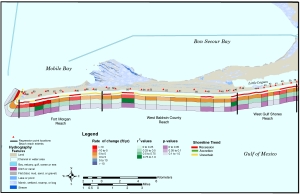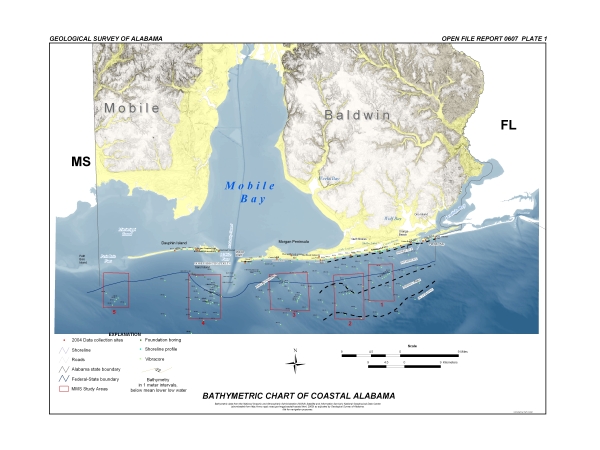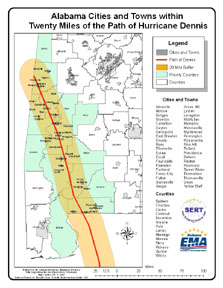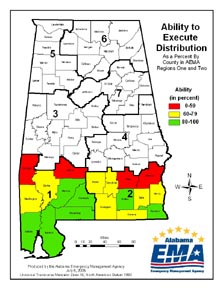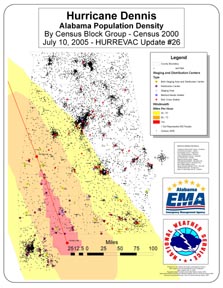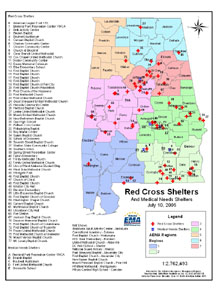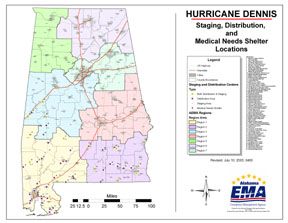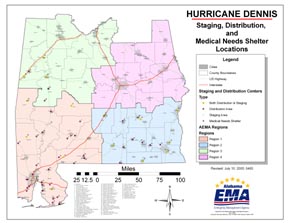The Sand Resources project is a cooperative study between the U.S. Minerals Management Service and the GSA. The main purpose of this study is to identify sand resources on the Gulf of Mexico’s inner continental shelf suitable for beach nourishment programs. As nearshore beach quality sand reserves are depleted, it is imperative that new sources of sand are found to repair eroded beach areas. Other project objectives include the investigation, coastal erosion, and the evaluation of nonfuel mineral resources. The report, titled “Sand-Quality Characteristics of Alabama Beach Sediment, Environmental Conditions, and Comparison to Offshore Sand Resources: Annual Report 2,” is available as Open-File report 0607 and is dated June 2006.
Sieve data are available for samples from Alabama beaches and dunes, and from state and federal waters offshore Alabama. The accompanying Microsoft Excel files contain raw data collected at the Geological Survey of Alabama. For analytical methods and other information related to these data see:
Kopaska-Merkel, D. C. and Rindsberg, A. K., 2005, Sand-Quality Characteristics of Alabama Beach Sediment, Environmental Conditions, and Comparison to Offshore Sand Resources: Alabama Geological Survey Open-File Report 0508 (on CD-ROM), Annual Report 1 under U.S. Minerals Management Service Cooperative Agreement 1435-01-04-CA-34423.
and
Rindsberg, A. K., and Kopaska-Merkel, D. C., 2006, Sand-Quality Characteristics of Alabama Beach Sediment, Environmental Conditions, and Comparison to Offshore Sand Resources: Alabama Geological Survey Open-File Report 0607 (on CD-ROM), Annual Report 2 under U.S. Minerals Management Service Cooperative Agreement 1435-01-04-CA-34423.
